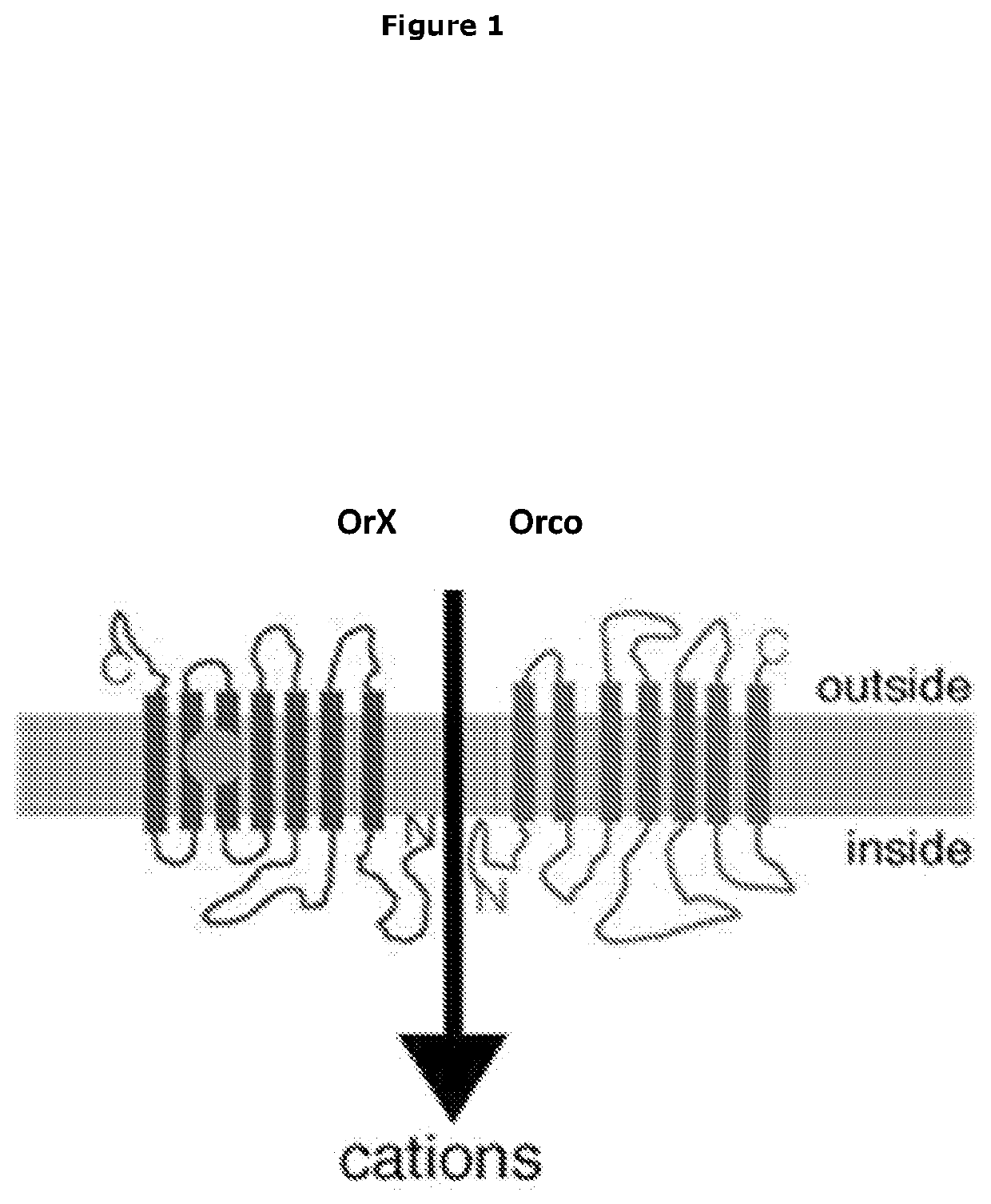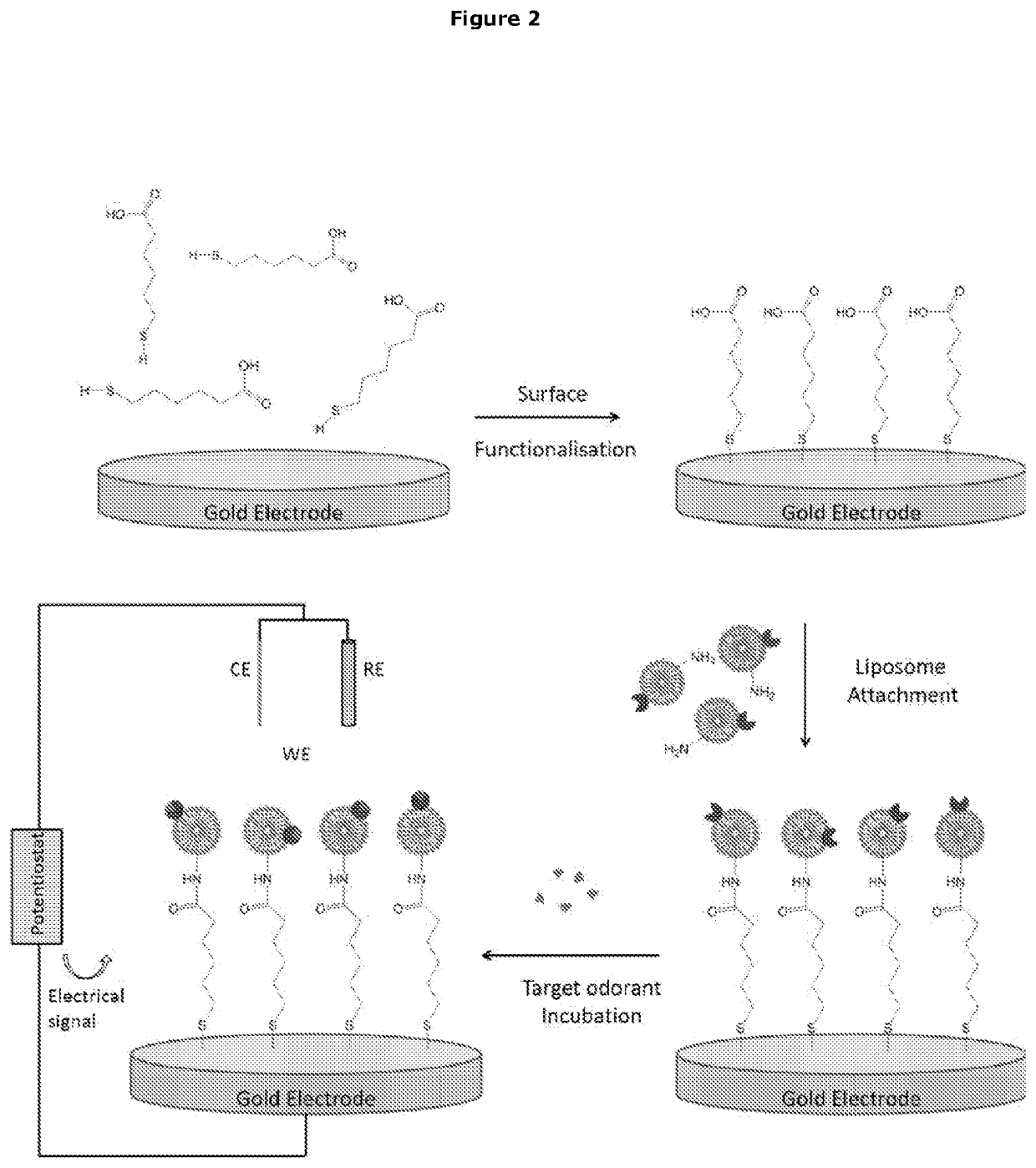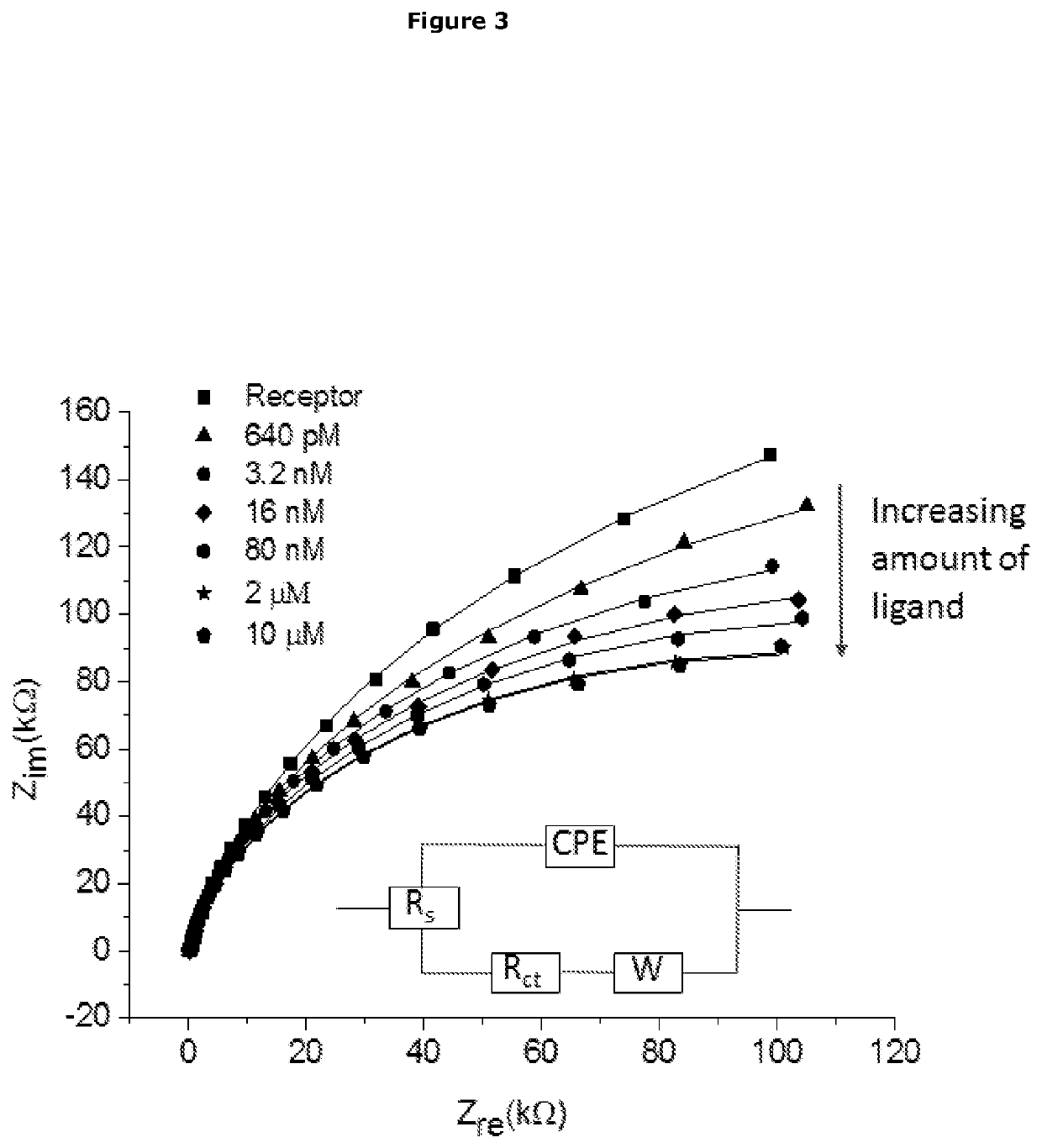Sensor Device and Methods
a technology of analytes and sensors, applied in the field of sensors and methods for detecting analytes, can solve the problems of inability to manufacture commercial products, limited application of portable volatile sensing technologies, and inability to meet the requirements of a wide range of applications,
- Summary
- Abstract
- Description
- Claims
- Application Information
AI Technical Summary
Benefits of technology
Problems solved by technology
Method used
Image
Examples
example 1
Exemplification of the Sensor of the Invention with Electrical Impedance Spectroscopy (EIS)
[0579]1.0 Experimental Methods
[0580]1.1 Materials
[0581]N-(3-dimethylaminopropyl)-N′-ethylcarbodiimide (EDC), N-hydroxysuccinimide (NHS), phosphate buffered saline (PBS) pellets, 6-Mercaptohexanoic acid (MHA), dimethyl sulfoxide (DMSO) were purchased from Sigma Aldrich. All aqueous solutions were prepared with distilled water (Milli-Q 18.2 MΩ), filtered through Microscience Hydraflon filters (0.22 μm) and flushed with N2 for 10 minutes unless otherwise stated. 1.6 mm gold (Au) disk electrodes, platinum (Pt) spiral auxiliary electrode and Ag / AgCl reference electrode were purchased from BASI.
[0582]1.2 Preparation of Liposome Associated OR Subunits
[0583]Liposomes were prepared using a phospholipid solution produced by evaporating solutions containing: phosphatidylethanolamine (PE), phosphatidylserine (PS), phosphatidylcholine (PC), and cholesterol (CH) at a molar ratio of 5:3:3:1 in a small glass ...
example 2
Exemplification of the Sensor of the Invention with a Carbon Nanotube-Field Effect Transistor (CNT-FET)
[0609]1. Summary
[0610]The applicants have produced a convenient, sensitive sensor device using insect OrX sequences. Drosophila melanogaster OR35a43 insect OrX receptors embedded in nanodiscs 55,56 were functionalized on the CNT FETs via 1-pyrenebutanoic acid succinimidyl ester (PBASE) and polyhistidine functionalization. The CNT FETs have shown a clear electronic response to the target ligand E-2-hexenal in real time current measurement mode starting at 1 fM concentration. The specificity of the binding is verified by testing the OR35a functionalized CNT FETs response to control materials, PBS and methyl hexanoate. To further ensure the specificity the response of pristine CNT FET and empty nanodisc functionalized CNT FETs to E-2-hexenal are also tested.
[0611]2. Experimental Methods
[0612]2.1 Carbon Nanotube Transistor Device Fabrication
[0613]To fabricate carbon nanotube field effe...
example 3
Further Exemplification of the Sensor of the Invention with a Carbon Nanotube-Field Effect Transistor (CNT-FET)
[0647]1. Summary
[0648]The applicants have further exemplified the convenient, sensitive sensor device using insect OrX sequences. Four Drosophila melanogaster OrX receptors (Or10a, Or22a, OR35a and Or71a)43,63 were each embedded in nanodiscs55,56 and functionalized on the CNT FETs via 1-pyrenebutanoic acid succinimidyl ester (PBASE) and amine group reaction (present on the OrX and membrane scaffold proteins) under further optimized conditions. Each of the OrX functionalized CNT FETs have shown a clear electronic response to their target ligands (Or10a to methyl salicylate, Or22a to methyl hexanoate, Or35a to E-2-hexenal, and Or71a to 4-ethyl guaiacol) in real time current measurement mode starting at 1 fM concentration. The specificity of the binding is verified by testing each OrX functionalized CNT FETs response to control materials, PBS and non-responding ligands. To fur...
PUM
| Property | Measurement | Unit |
|---|---|---|
| resonant frequency | aaaaa | aaaaa |
| resonant frequency | aaaaa | aaaaa |
| pH | aaaaa | aaaaa |
Abstract
Description
Claims
Application Information
 Login to View More
Login to View More - R&D
- Intellectual Property
- Life Sciences
- Materials
- Tech Scout
- Unparalleled Data Quality
- Higher Quality Content
- 60% Fewer Hallucinations
Browse by: Latest US Patents, China's latest patents, Technical Efficacy Thesaurus, Application Domain, Technology Topic, Popular Technical Reports.
© 2025 PatSnap. All rights reserved.Legal|Privacy policy|Modern Slavery Act Transparency Statement|Sitemap|About US| Contact US: help@patsnap.com



